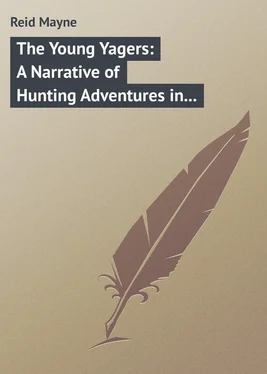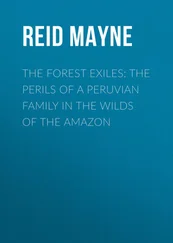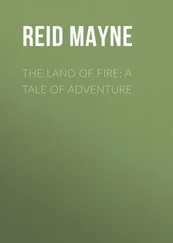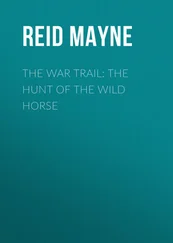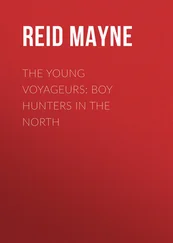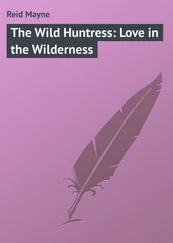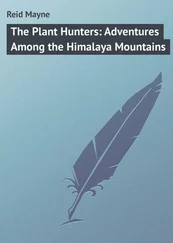Mayne Reid - The Young Yagers - A Narrative of Hunting Adventures in Southern Africa
Здесь есть возможность читать онлайн «Mayne Reid - The Young Yagers - A Narrative of Hunting Adventures in Southern Africa» — ознакомительный отрывок электронной книги совершенно бесплатно, а после прочтения отрывка купить полную версию. В некоторых случаях можно слушать аудио, скачать через торрент в формате fb2 и присутствует краткое содержание. Жанр: foreign_prose, foreign_children, на английском языке. Описание произведения, (предисловие) а так же отзывы посетителей доступны на портале библиотеки ЛибКат.
- Название:The Young Yagers: A Narrative of Hunting Adventures in Southern Africa
- Автор:
- Жанр:
- Год:неизвестен
- ISBN:нет данных
- Рейтинг книги:4 / 5. Голосов: 1
-
Избранное:Добавить в избранное
- Отзывы:
-
Ваша оценка:
- 80
- 1
- 2
- 3
- 4
- 5
The Young Yagers: A Narrative of Hunting Adventures in Southern Africa: краткое содержание, описание и аннотация
Предлагаем к чтению аннотацию, описание, краткое содержание или предисловие (зависит от того, что написал сам автор книги «The Young Yagers: A Narrative of Hunting Adventures in Southern Africa»). Если вы не нашли необходимую информацию о книге — напишите в комментариях, мы постараемся отыскать её.
The Young Yagers: A Narrative of Hunting Adventures in Southern Africa — читать онлайн ознакомительный отрывок
Ниже представлен текст книги, разбитый по страницам. Система сохранения места последней прочитанной страницы, позволяет с удобством читать онлайн бесплатно книгу «The Young Yagers: A Narrative of Hunting Adventures in Southern Africa», без необходимости каждый раз заново искать на чём Вы остановились. Поставьте закладку, и сможете в любой момент перейти на страницу, на которой закончили чтение.
Интервал:
Закладка:
Had it been a buffalo, or a giraffe, or even an elephant, neither Klaas nor Jan would have so much cared. Beasts are all very well in their way, and may interest full-grown hunters, like Hendrik and Groot Willem, but for “boy hunters,” with light fowling-pieces and Number 5 shot, birds are the game – though their Number 5 shot would hardly have tickled an ostrich.
No matter for that. They wanted to see the great camel-bird. Hans ought to have apprised them. It was “right mean” of him not to do so, – right mean, said Jan, and Klaas backed the opinion.
How long they might have grumbled, and given vent to their reproaches, can only be guessed at; but the conversation turning upon ostriches assumed a very pleasing character; and Klaas and Jan, becoming deeply interested in it, soon got over their little “miff” with Hans – especially as it was he who was now interesting them. Upon the subject of ostriches. Hans had read a good deal, and was well acquainted with the character and habits of these most interesting birds.
Swartboy stood next in his knowledge of the ostrich, for Swartboy in early life had been a “dweller of the desert,” – the home of the Bushman as well as the great camel-bird. Swartboy was only too happy at the opportunity thus offered of showing off his knowledge, for the late wonderful performances of his Kaffir rival had quite thrown him into the shade.
So what with Hans’s book-knowledge and Swartboy’s practical experience, the young yägers became pretty well acquainted with the whole “history” of the bird.
“The ostrich,” said Hans, “is an African bird, though also found in the adjacent countries of Asia. Several species of birds somewhat like it, belonging to South America, Australia and the islands of the Indian Archipelago, have been called ‘ostriches’ in the language of travellers. I shall have a word about these presently.
“All over the African continent, as well as Arabia, Syria, and Persia, dwells the ostrich, wherever there are desert plains – for this bird is peculiarly a denizen of the desert, and never makes its home in wooded, marshy, or even fertile districts.
“It has been known from the earliest times, and must have been more numerous in the days of Heliogabalus than now, since that tyrant had the brains of six hundred ostriches served up at a single feast!”
“Oh, the glutton!” exclaimed Jan.
“What a gourmand!” echoed Klaas.
“I should think after the feast he had more brains in his stomach than in his head,” quietly remarked Arend.
“No doubt of it,” added Hendrik.
Hans continued: —
“The ancients knew the ostrich as the ‘camel-bird,’ ( Struthio camelus ). This name was given to it on account of its fancied resemblance to the camel; and in its hoof-like two-toed feet, its long naked thighs and neck, and the pad or cushion on its chest, corresponding to the callosity on the breast of the camel, it does bear a resemblance to this animal. Like it, too, the ostrich is formed for the desert. Aristotle and Pliny described the ostrich as half bird, half quadruped.”
As soon as Hans had given the more scientific part of the natural history of the ostrich, Swartboy’s knowledge of the habits of the bird was produced, and from both were collected the details that follow.
Ostriches are gregarious – flocks of fifty may be seen upon the plains, peacefully associating with zebras, quaggas, wildebeests, blue wildebeests, and several other plain-frequenting antelopes.
The males are polygamous, and usually have from two to six wives. These lay twelve to sixteen eggs each, in a nest which is only a hole scooped out in the sand about six feet in diameter. Not more than half the eggs are deposited in the nest. The others lie scattered around, and are never hatched.
Swartboy alleged that these were intended to feed the young when they came out of the shell: but Hans dissented from this opinion. The naturalist believed that those scattered about were superfluous eggs, which were not deposited in the nest because one bird could not cover all that the whole family of hens would lay; and that once the “setting” was complete, the superfluous eggs were dropped about anywhere.
There is a good deal of probability in this conjecture of the young naturalist.
It is certain that the scattered eggs are those last laid, and that the birds continue to drop them after the incubation has commenced, but whether they form the food of the young is a disputed point. One bird can cover from thirty to forty, placed as they usually are upon their ends, and Swartboy said that he had often found this number in a nest, but more frequently thirty was the “setting.”
The male takes part in the incubation, sitting during the night; when his greater size and strength enable him the better to protect the eggs from cold. The “hens” relieve one another during the day, but when the sun is hot all leave the nest to itself, for hours at a time.
Hans stated, that in the more tropical regions the eggs are forsaken for long spells, and the hot sand and sun do the work of the parent birds; and that on this account the period of incubation is not fixed, but ranges from thirty to forty days.
The young when hatched are well developed, and in a day or two become as large as guinea-hens, leaving the nest and running about in charge of the parent birds.
At this period the old ones are very careful of their offspring. When an enemy approaches, the hen that has charge of the flock will endeavour to attract the intruder upon herself, making a feint of being wounded, spreading and drooping her wings, and tumbling from side to side along the ground, while the cock draws off the chicks in an opposite direction! Partridges, wild ducks, and many other birds, do the same.
The eggs of the ostrich are of a dull white colour. They are not all of equal size, nor are the birds either. A medium-sized ostrich-egg is six inches long, and weighs about three pounds. It is excellent eating when broiled among hot cinders, and is a meal for a man, – some say two, some three, while others allege that it is not enough for one. But “a meal for a man” is a very uncertain standard, and depends a good deal on the capacity of the man’s stomach and the state of his appetite. A better standard is found in the estimate that one ostrich-egg is equal in quantity to twenty-four of the common domestic fowl.
The shells of the ostrich-eggs are very strong, and used by the Bushmen and other natives of the desert as water-vessels – the only vessels that some of them have.
A full-grown cock ostrich stands over nine feet in height, and weighs three hundred pounds. The legs of such a bird are immensely thick and muscular, and the thigh-joint equals in size the largest leg of mutton.
The ostrich is thought to be the swiftest runner in creation, but there are doubts about this. Certain it is that it cannot be overtaken by a horse in a fair tail-on-end chase; but the bird makes “doubles” in running, and by observing these, the mounted hunter sometimes gets near it by making a cut upon it, and delivers his fire as it passes. To run an ostrich down, however, is considered an impossibility, even by the Arab on his fleet steed. Its bottom is equal to its speed, as it can keep up the pace for hours together.
The muscular strength of its great long legs is well adapted for running fast and far; and while on the run, its hoofs make a clatter like those of a trotting horse, while large stones are flung violently to the rear! When at full speed it spreads its white wing-plumes, raising them over its back, but this is only done to balance it, as it could not fly a single yard.
Its principal weapon of defence is the leg with its hoof-like foot. With this it can kick like a mule, and the blow will break a man’s leg, or send the breath out of his body, as would the kick of a horse!
Читать дальшеИнтервал:
Закладка:
Похожие книги на «The Young Yagers: A Narrative of Hunting Adventures in Southern Africa»
Представляем Вашему вниманию похожие книги на «The Young Yagers: A Narrative of Hunting Adventures in Southern Africa» списком для выбора. Мы отобрали схожую по названию и смыслу литературу в надежде предоставить читателям больше вариантов отыскать новые, интересные, ещё непрочитанные произведения.
Обсуждение, отзывы о книге «The Young Yagers: A Narrative of Hunting Adventures in Southern Africa» и просто собственные мнения читателей. Оставьте ваши комментарии, напишите, что Вы думаете о произведении, его смысле или главных героях. Укажите что конкретно понравилось, а что нет, и почему Вы так считаете.
